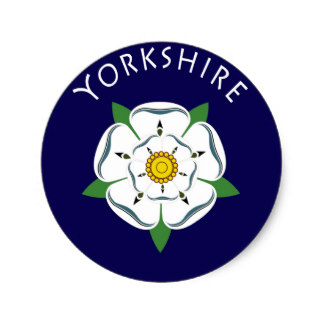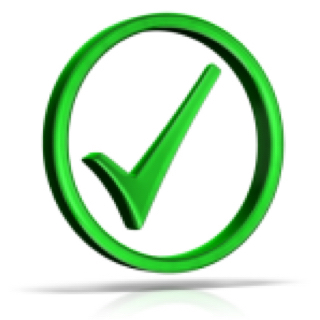Title Page
-
Location
-
Conducted on
-
Inspected by
CK Audit
1. General
-
Are all crew members inducted to the kitchen and is there an accurate register of kitchen inductions?
-
Have trip, slip and fall hazards been eliminated?
- Compliant
- Non-Compliant
- N/A
-
Has an emergency response drill been conducted in the kitchen in the last 6 months?
- Compliant
- Non-Compliant
- N/A
-
Request to sight crews previous JSA's and ensure all approvals, signature and crew sign off's in order. Is the paperwork compliant?
- Compliant
- Non-Compliant
- N/A
-
Is there a current Emergency Response Plan in the kitchen
- Compliant
- Non-Compliant
- N/A
-
Are workers aware of proper site specific emergency procedures?
- Compliant
- Non-Compliant
- N/A
-
Are all hazardous conditions monitoring equipment in place?
- Compliant
- Non-Compliant
- N/A
2. Hygiene
-
Employees wash their hands with soap and warm water before starting work, immediately after using washroom, any time needed to prevent cross-contamination
-
Do you have separate sinks for dish washing and hand washing?
-
Bacterial soap provided at all wash hand basins
-
Disposable paper towels provided & used to dry hands
-
Do workers change into protective clothing before work?
-
Do workers keep their hair back and/or wear a hair net or hat?
-
Clothing and personal effects stored away from products in a proper manner
-
Are crew free from jewellery
3. Kitchen
-
Have you got colour coded chopping boards?
-
Do you follow safe thawing practices?
-
Do you have separate preparation areas for raw and ready to eat foods to prevent cross contamination?
4. Floors, Wall, Ceilings, Lighting and Ventilation
-
Floors clean, well maintained and in good repair
-
Are rubber mats in good condition and free from damages
-
Walls, ceilings and windows clean. Well maintained and in good repair
-
Adequate lighting and ventilation provided throughout the facility
-
Light fixtures have approved safety covers
-
Exhaust ventilation filters are clean and well maintained
5. Equipment and Utensils
-
Food contact surfaces washed, rinsed and sanitised before using, at least every 4 hours when not in use
-
Non-Food contact surfaces visibly clean and in good repair
-
All equipment (i.e.) stoves, grilld, refrigerators, tables, sinks, ect. cleaned and well maintained
-
Do your fridges and freezers have thermometers?
-
Do you use food probes and keep them clean and calibrated?
-
Multi- service utensils are being washed and sanitised by one of the following methods:
- Safe
- At Risk
- N/A
-
Single service utensils are properly stored and dispensed
-
All multi-service utensils are clean, properly stored, maintained and dispensed
-
Damaged or unapproved utensils have been repaired or replaced
6. Refrigerator / Freezer
-
Food stored on suitable racking off the floor
-
Defrosted food never refrozen
-
Use by date codes transferred to containers
-
Food not stored in open containers
-
Strict stock rotation being observed
-
Food containers sanitised before use
7. Dining
-
Is there sufficient space between tables
-
Are highchairs available for patrons
-
Is adequate wet floor signage available
8. Stockroom
-
Are cutlery and crockery products stored safely and securely
-
Have all electrical items been correctly tested and tagged and updated in the applicable register
-
Is stockroom free from any slips, trips or falls on flooring.
-
Are heavy items stored near the bottom of racks
-
Is stockroom equipped with a proper fire extinguisher?
-
Are emergency exit clearly marked?
9. Ware Washing
-
High-temp dish machines minimum washing temp of 151°F/66°C rinse temp 179°F/82°C for 10 seconds
-
Low-temp dish machine minimum wash and rinse temp of 130°F to 150°F/50°C to - 66°C. with chlorine sanitizer solution at a Minimum 100ppm.
-
Manual sink ware washing minimum wash, rinse, sanitizing sink water temp 11 3°F/45°C.<br>Sanitizing solution minimum chlorine 1 00mg/L; Quat. 200mg/L; or Iodine 12.5 – 25mg/L (ppm) Soak for 2 minutes
-
Wiping cloths clean, sanitized, stored and maintained properly
10. Garbage and Waste
-
Trash containers are lined with insect and vermin-proof disposable plastic bag at all times.
-
Plastic bags are tied before being placed in outside trash bin. Bin lids are kept closed.
-
Outside premises and refuse areas are clean, sanitized, illuminated by light and well maintained.
-
Frequency of garbage removal adequate to maintain premises in a sanitary condition.
11. Pest Control
-
Adequate protection against the entrance of insects, vermin, rodents, dust and fumes.
-
Outside doors and screen doors are self-closing and closures are in acceptable working order.
-
Keep all areas free of debris, moisture, and visable soil and well lit.
-
Working with a licensed pest control company.
12. Safety Equipment
-
Inspections being performed on all fire extinguishers and blankets at least every 6 months?
-
Are all fire extinguishers free of damage, rust and in good condition?
-
Is fire fighting equipment readily available and crew trained? Verify crew understanding of Extinguisher Types - Class of Fire and safe use of extinguisher.
-
Is there an extinguisher for oil storage placed in a good location?
-
Where applicable are fire suppression systems inspected? Tagged and certificates in register?<br>
-
Are functional fire extinguishers accessible
-
Trauma kit available and stocked, located in administration office and location identified with sticker
-
Is emergency alarm system/ sprinkler systems regularly inspected and recorded on register?
-
Is there a proper eyewash station available with correct signage?
13. Documentation
-
Is there standard work procedures readily available for crew member review?
-
Can the crew indicate where the Standard Operating Procedures or Safe Work Instruction Method's are?
-
Can the crew explain what hazards are associated with the kitchen and surrounding environment?
-
Can the crew explain how the emergency response plan works and what to do in an emergency?
-
Is there Safety Data Sheets readily available for crew members to review?
-
Are registers complete, correct and up to date?













